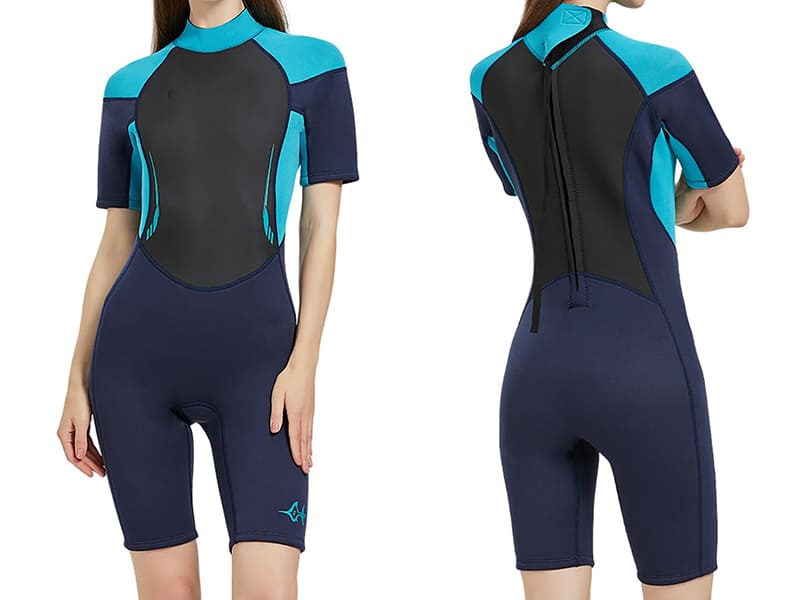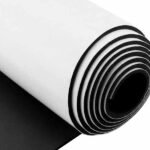Imagine diving into icy waters without a layer of protection. The shock of cold water would overwhelm your body, making every second unbearable. But with a neoprene suit, you can endure these conditions and even thrive. How does it work? Let’s explore the science and design behind neoprene suits and how they protect you from the cold.
A neoprene suit protects you from the cold by using its unique insulation properties to trap a thin layer of water between your body and the suit. This layer warms up from your body heat, creating a thermal barrier that prevents heat loss.
Neoprene’s structure and design are specifically engineered to lock in heat, resist water absorption, and maintain flexibility. This remarkable material has become indispensable for water sports and cold-weather activities. Read on to discover how neoprene suits work and why they’re so effective.
What is a neoprene suit?
A neoprene suit is a protective garment designed for water activities and cold environments. Made primarily from neoprene, a synthetic rubber, it offers excellent thermal insulation, flexibility, and buoyancy.
Neoprene suits include wetsuits, drysuits, and thermal gear for diving, surfing, and outdoor sports. They are tailored to fit snugly, ensuring minimal water movement inside the suit for optimal warmth.
Neoprene suits come in various designs, from full-body coverage to short-sleeved and sleeveless options. This variety allows users to choose a suit tailored to their specific needs and activities.
Types of neoprene suits and their uses
| Type | Features | Best For |
|---|---|---|
| Wetsuit | Allows water in, warms it up | Surfing, diving, swimming |
| Drysuit | Fully waterproof, traps warm air | Ice diving, sailing |
| Shorty Suit | Short sleeves and legs | Warm-weather watersports |
How does neoprene insulation work?
Neoprene insulation works by leveraging its closed-cell structure, which is filled with tiny gas bubbles. These bubbles trap heat and prevent cold water from coming into direct contact with your skin.
The suit traps a small amount of water between your body and the neoprene. Your body heat warms this water layer, creating an effective barrier against cold temperatures.
Neoprene also has a low thermal conductivity, meaning it resists heat transfer. This property makes it ideal for maintaining warmth in cold conditions.
Why neoprene’s insulation is so effective
Neoprene’s insulation is not just about trapping heat. The gas-filled cells make the material lightweight and flexible, ensuring comfort during movement. The suit’s snug fit minimizes water exchange, allowing the trapped water to stay warm longer.
Does neoprene protect from cold?
Yes, neoprene effectively protects you from the cold, but its performance depends on factors such as thickness, fit, and water temperature.
A well-fitted neoprene suit can reduce heat loss by up to 90%, making it possible to stay in cold water for extended periods.
Neoprene suits are used by professionals in extreme conditions, including Arctic divers and endurance swimmers. These suits are engineered to withstand cold temperatures while maintaining flexibility and durability.
What does a neoprene suit do?
A neoprene suit acts as a thermal shield and a buoyancy aid. Its primary function is to maintain your body temperature in cold environments.
In addition to keeping you warm, neoprene suits provide protection against abrasions, UV rays, and marine hazards, making them essential for water sports enthusiasts.
The suit’s buoyant properties also help swimmers stay afloat, reducing energy expenditure and enhancing safety.
Additional benefits of neoprene suits
- Comfort: Neoprene’s elasticity allows for a snug yet comfortable fit.
- Durability: Resistant to wear and tear, neoprene suits are long-lasting.
- Adaptability: Suitable for various activities, from surfing to underwater photography.
How does neoprene’s structure lock in heat?
Neoprene’s structure consists of millions of closed cells filled with gas. These cells act as insulators, trapping heat and creating a barrier against cold water.
The closed-cell design prevents water from penetrating the material, ensuring the suit retains its thermal properties even when wet.
The science of heat retention
- Gas Cells: The gas inside the cells is a poor conductor of heat, reducing heat loss.
- Snug Fit: The tight fit minimizes water circulation, keeping the trapped water warm.
- Thickness Variability: Thicker neoprene layers provide better insulation for colder conditions.
What are the common thickness options for neoprene suits?
Neoprene suits come in various thicknesses, typically ranging from 1mm to 7mm. The choice of thickness depends on the water temperature and activity level.
Thicker suits (5-7mm) are ideal for colder waters, while thinner suits (1-3mm) are suitable for warmer climates or high-intensity activities.
Thickness guide for neoprene suits
| Thickness | Water Temperature (°C) | Recommended Activities |
|---|---|---|
| 1-3mm | 20°C and above | Snorkeling, paddleboarding |
| 3-5mm | 15-20°C | Surfing, recreational diving |
| 5-7mm | Below 15°C | Ice diving, deep-sea exploration |
Conclusion
Neoprene suits are a marvel of material science, combining insulation, flexibility, and durability to protect users from cold conditions. By trapping a thin layer of water and leveraging neoprene’s unique closed-cell structure, these suits provide unparalleled warmth and comfort in challenging environments.
At Szoneier, we specialize in high-quality neoprene products, including custom neoprene suits tailored to your needs. With years of experience and advanced manufacturing capabilities, we deliver durable, customizable neoprene gear for various applications. Contact us today to learn how we can help you stay warm and protected in any environment.











